




An Overview of Rivers
A river is a stream flowing on the earth. The source of rivers is usually ice glaciers, i.e., glaciers, lakes, natural sources or springs or rainwater. Any river ends in a big ocean, lake or desert. Rivers usually contain fresh water. A river begins at one source (or more often several sources), follows a course and ends at a mouth.
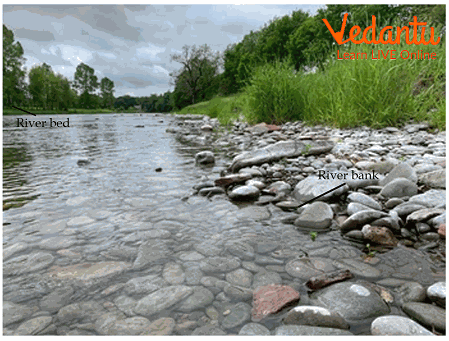
River Bed and River Bank
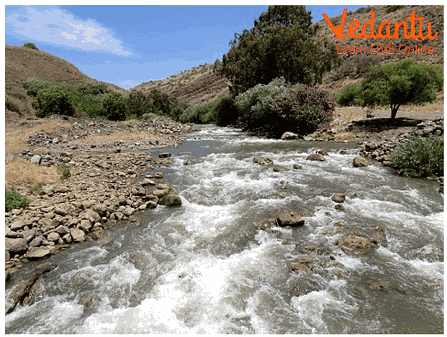
River Current
Information About River
The course through which the river flows is called the river bed and the earth on each side is called the river bank. The movement of water in a river is called current. The current is usually strongest near the source of the river. Rivers can flow down mountains, along valleys or plains, and form canyons or valleys. Some flow throughout the year. Others flow seasonally or during wet years. A river may be only kilometres long, or it may extend over most of a continent.
Benefits of River
The river is that source of water, which is born due to rainwater. The water of the river is always flowing. This flowing water of the river comes out of the mountain or spring and joins many tributaries and merges into the sea.
For Farmers: The farmers get the maximum benefit from the river. Because the freshwater from the river helps in growing the crops which is a great help to the farmers. Therefore, the areas of the fields living near the river are always fertile crops because river water helps farmers in maintaining the water level in the fields.
Electricity Production: River water is also used for the generation of electricity and the flow of the river is stopped by making a dam. After that, electricity is produced from that water. Today's modern world is running with the use of electricity.
Help with Construction Works: The river helps us in many important constructions like strong houses, buildings and many more. Because in such construction works, strong rocks found in the river are used.
We get many benefits from the river, due to which the river is very important for our life.
Interesting Facts about Famous Rivers
The longest river flowing on the earth is the Nile River. This river flows in Africa. Its total length is 6,853 kilometres (4,258 mi).
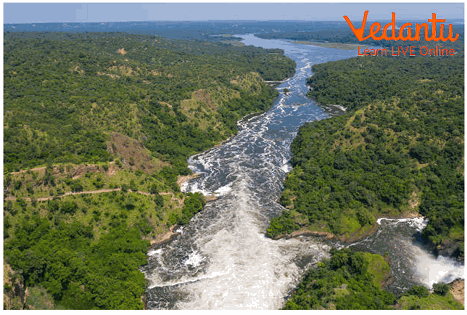
Nile River
The Amazon River is the second-longest river in the world. It covers a length of about 6400 kilometres (4000 mi).

Amazon River
The length of the world's shortest river is just 118 feet (36 metres). It is called the Dee River and is located in Oregon, United States.
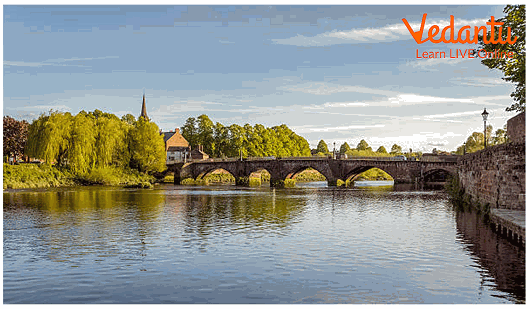
Dee River
Originating in the Rocky Mountains of western Montana, Missouri flows 3,767 kilometres (2,341 mi) east and south before entering the Mississippi River north of St.
The longest river in Europe is the Volga. It flows approximately 3,685 kilometres (2,290 mi) into Russia and drains into the Caspian Sea.
The Congo River is the world's deepest river with a depth of over 220 metres (720 ft). It is the second longest river in Africa after the Nile and the second largest river in the world by volume of water (after the Amazon).
The Indus River is the longest river flowing through India.
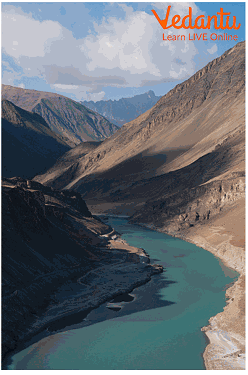
Indus River
The world's longest-flowing river called the Pyana flows through Russia.
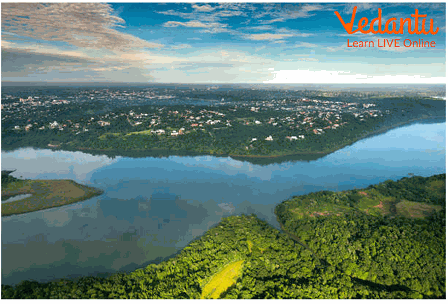
Parana River
The Royal River of Australia is the dirtiest in the world. All the biological life here has become extinct.
The width of the Amazon River is up to 11 kilometres in many places. The width of the river reaches an astonishing 190 kilometres (120 mi) on rainy days.
China's Yangtze River is the third longest river in the world, running 6,300 kilometres (3915 mi). The river is the longest in the world flowing entirely within a country.
Solved Questions
1. What is River Current?
Ans: The movement of water in a river is called current.
2. Which river is the largest in the world?
Ans: The Nile is the largest river in the world.
3. Which river is called the Dee River?
Ans: The length of the world's shortest river is just 118 feet (36 metres). It is called the Dee River and is located in Oregon, United States.
4. Who is called the mouth of the river?
Ans: The place where a river enters a lake, a large river or an ocean is called the mouth of the river.
Learning by Doing
Write True or False.
The current usually weakens near the source of the longest-flowing river called the Pyana flows through Russia.
The Royal River of Australia is the neatest in the world.
Summary
A river is a stream flowing on the surface, whose source is usually a lake, glacier, spring or rainwater and falls into an ocean or lake. Rivers can flow down mountains, along valleys or plains, and form canyons or valleys. Some flow throughout the year. Others flow seasonally or during wet years. A river may be only kilometres long, or it may extend over most of a continent. The longest river flowing on the earth is the Nile River and the Amazon River is the second longest river in the world.
FAQs on Facts About Rivers
1. What are some fun and interesting facts about rivers for kids?
Rivers are full of amazing facts! Here are a few to get you started:
The Nile River in Africa is widely accepted as the longest river in the world.
The Amazon River in South America is not the longest, but it carries more water than any other river.
Some rivers can even flow underground, these are called subterranean rivers.
The world's largest dam, the Three Gorges Dam, is built on the Yangtze River in Asia.
2. Why are rivers so important for people and our planet?
Rivers are vital for life on Earth for many reasons. They provide fresh drinking water for people, animals, and plants. They make the land nearby very fertile, which is great for farming and growing food. Rivers are also important homes (habitats) for thousands of species of fish, birds, and other animals. Additionally, they have been used for centuries for transportation and trade, allowing boats to carry goods and people from one place to another.
3. Where does all the water in a river come from?
A river's water comes from several places. The beginning of a river, called its source, is often high up in the mountains. Here, water comes from:
Melting snow and ice: As the weather gets warmer, snow and glaciers melt, and the water flows downhill.
Rainwater: Rain that falls on the land collects into small streams.
Underground springs: Water from under the ground can bubble up to the surface.
These small streams, called tributaries, join together to form a large, flowing river.
4. How is a river different from a lake or an ocean?
The main difference is movement. A river is a body of freshwater that is constantly flowing in a path, usually from a high area to a lower one, eventually reaching another body of water like a lake or an ocean. A lake, on the other hand, is a large body of mostly still freshwater that is surrounded by land. An ocean is a vast body of saltwater that covers most of the Earth's surface.
5. Why do rivers have a curvy or winding shape instead of being straight?
Rivers are almost never perfectly straight because water always follows the path of least resistance. As a river flows, it bumps into harder rocks and soil, forcing the water to go around them. Over time, the flowing water erodes the softer parts of the river banks more easily, creating bends. These curves and bends in a river's path are called meanders. So, the winding shape is a natural result of water's journey across different types of land.
6. Can a river flow backwards?
Yes, in some very specific situations! This phenomenon is most common in rivers that empty into the ocean. When a very strong incoming ocean tide, known as a tidal bore, pushes into the river's mouth, it can be powerful enough to temporarily reverse the river's flow near the coast. The Amazon River is a famous example where this happens, creating a massive wave that travels upriver.
7. Which is the longest river in Asia?
The longest river in Asia is the Yangtze River, located in China. It is the third-longest river in the world, after the Nile and the Amazon. It plays a crucial role in the history, culture, and economy of China.









